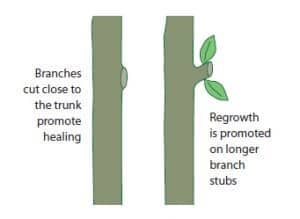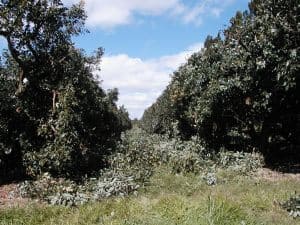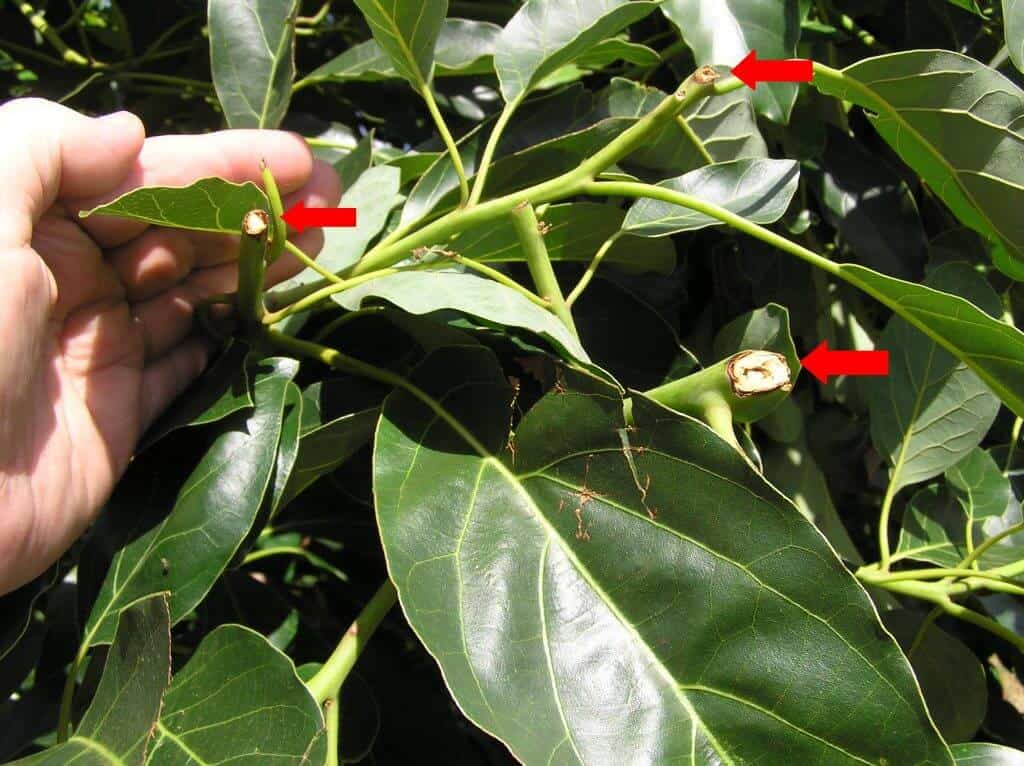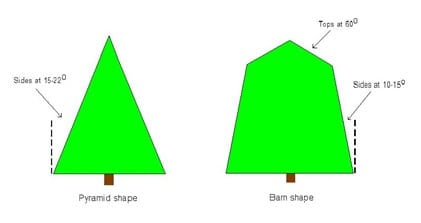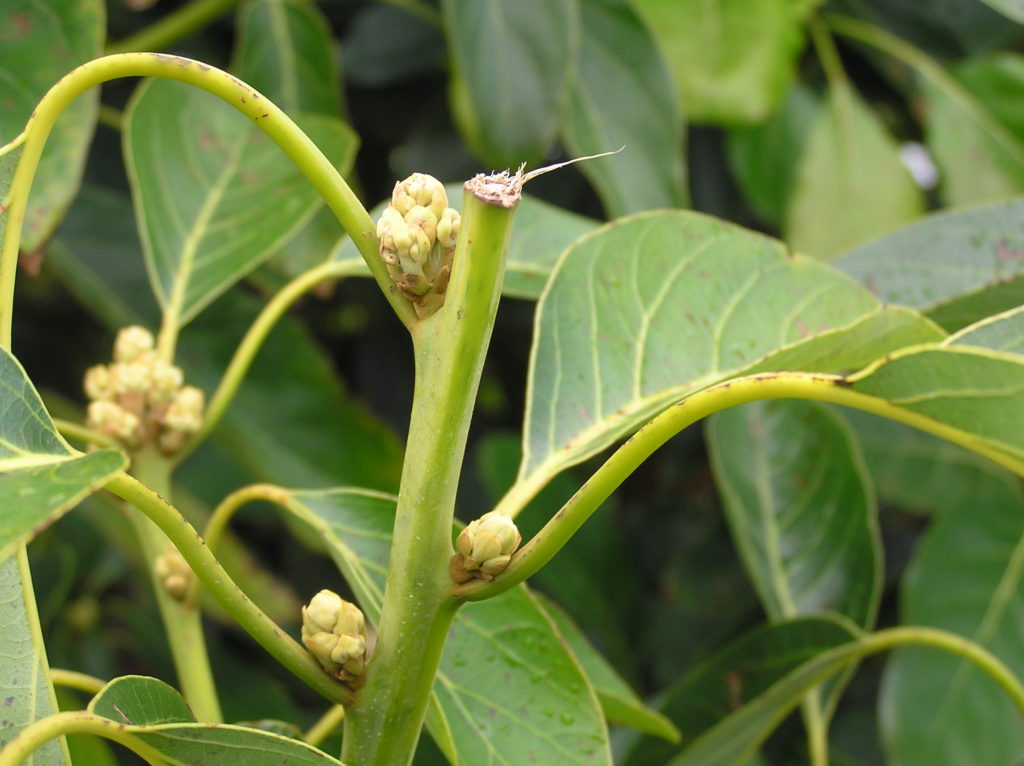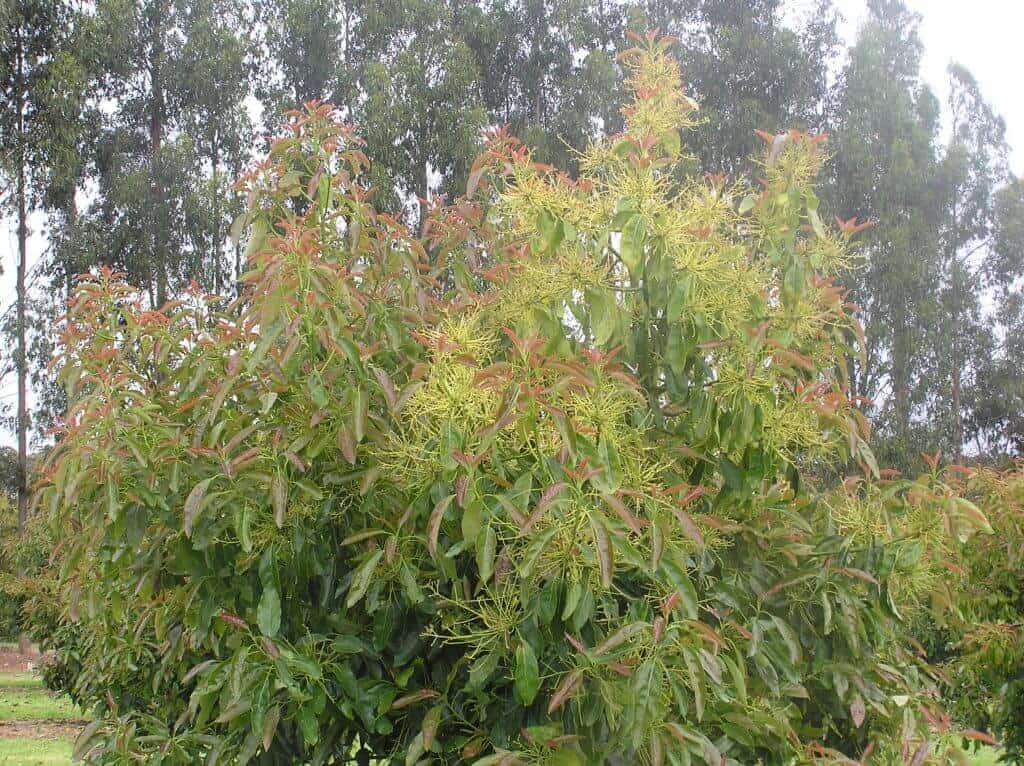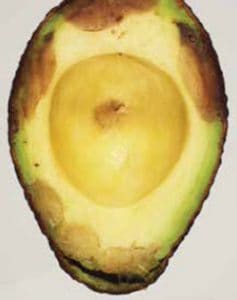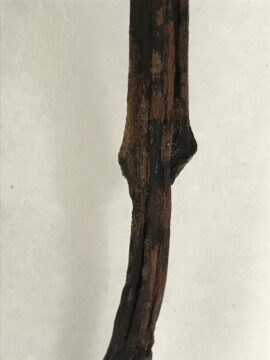Jump to these sections in the article:
Option 1: Pruning One-Third of the Tree
Option 2: Mechanical and Selective Pruning
Option 3: V-Shape Prune
Typically as orchards mature, in many regions canopy management needs to be undertaken to optimise and maintain orchard productivity. As the size of the avocado trees increase, canopy management may need to be conducted more vigorously to maintain the balance between orchard manageability and yield. This will most likely entail major limb removal. Three options have been recommended here for large avocado trees requiring major limb removal.
Option 1: Pruning One-Third of the Tree
Procedure:
Year 1: Manually prune one side of the tree after harvest. The eastern side is normally pruned first to minimise sunburn on the main branches. Regrowth on the eastern side is mechanically tip pruned during summer to encourage lateral branches. Water shoots or vigorous regrowth are removed.
Year 2: Centre limbs are removed after harvest. Water shoots or vigorous regrowth on the eastern side are cut back or removed.

Year 3: Major limbs are cut back or removed from the other side (western side) of the tree. Water shoots or vigorous regrowth are cut back or removed.

Costs Involved:
Costs range from $16.50 – 27.50/tree/year ($3300 – 5500/ha based on 200 trees/ha).
Branches are removed or cut back using chainsaws. Smaller branches can be mulched using slashing equipment. Larger branches can be mulched (tractor operated forestry mulching equipment can handle branches up to 25cm diameter); chipped (commercial operators available @ $230/hr) or removed from the orchard.
Considerations:
Pruning Time
Major limb removal is carried out after harvest. In those areas where trees carry fruit all year round, major limb removal can commence in an ‘off’ year to minimise crop losses.
Regrowth is mechanically tip pruned during summer to encourage lateral branches. Water shoots or vigorous regrowth are removed or cut back to lateral branches.
Sunburn Protection
Some sunburn on higher branches can be tolerated as these limbs are removed in the second or third year. However the trunk and lower branch stubs should be protected from sunburn using white acrylic paint, clay preparations or calcium carbonate sprays.
Diluting the paint with water so it can be sprayed onto the exposed branches will reduce the time taken to apply protection. Adding a copper fungicide treatment (e.g. copper oxychloride) may assist in controlling disease at the pruned surface.
Plant Growth Regulators
At the date of publication both Sunny® (active ingredient uniconazole-P) and AuSTAR® (active ingredient paclobutrazol) were registered for use in avocado, however check the status of the registrations before planning an application. Also note that AuSTAR® cannot be used when there is mature fruit on the tree.
Foliar application of SUNNY® (Active constituent: 50g/L uniconazole-P) at a rate of 5-10L/1000L to the summer and autumn growth flush can reduce shoot growth, and may increase flowering and yield on the pruned side. New growth is treated when shoots are 50-100mm in length. Note withholding period: Do not harvest fruit for 14 days after application.
Do not apply plant growth regulators to trees with low vigour, under stress or showing symptoms of Phytophthora root rot.
Option 2: Mechanical And Selective Pruning
Procedure:
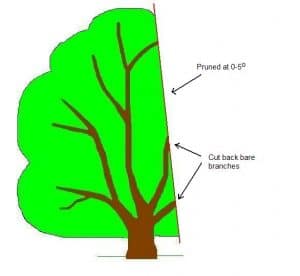
Year 1: Trees are mechanically pruned on one side after harvest at an angle of 0-5° from the vertical. Branches are cut 1-1.5m from the trunk. Follow-up selective hand pruning is carried out to remove bare and exposed branches. Trees are mechanically tip pruned in summer to cut back regrowth.
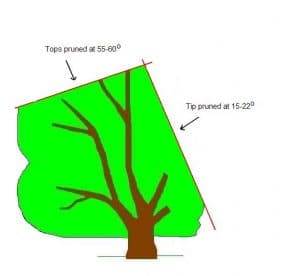
Year 2: Trees are mechanically topped after harvest at an angle of 55-60° from the vertical. Tree height reduced to 4.5-5m. Regrowth on the side pruned in the first year also mechanically tip pruned at an angle of 15-22° after harvest. Trees are tip pruned on both pruned faces in summer to cut back regrowth.
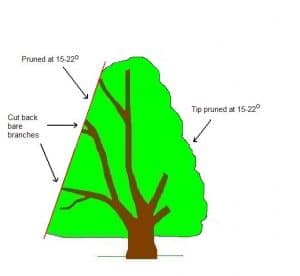
Year 3 or 4: The other side of the tree is mechanically pruned after harvest at an angle of 15-22° from the vertical. Follow-up selective hand pruning is carried out to remove bare and exposed branches. Regrowth on the side pruned in the first year also mechanically tip pruned at an angle of 15-22° after harvest. Trees are tip pruned at 15-22° on both sides in summer to cut back regrowth.
Costs involved:
Costs range from $12 – 17.50/tree/year ($2400 – 3500/ha based on 200 trees/ha).
Trees are cut back using mechanical saws. Pruning contractors are available at rates of $175-235/hr. Mechanical saws can cut branches up to 10-15cm diameter. Bare branches are cut back using chainsaws. Trees are mechanically tip pruned in summer to cut back regrowth.
Smaller branches can be mulched using slashing equipment. Larger branches can be mulched (tractor operated forestry mulching equipment can handle branches up to 25cm diameter), chipped (commercial operators available @ $235/hr) or removed from the orchard.
Considerations:
Pruning Time
Pruning is carried out after harvest. In those areas where trees carry fruit all year this strategy can be done in an ‘off’ year to minimise crop losses prior to the ’on’ year’s flowering. Regrowth is tip pruned during summer to cut back the spring growth and encourage lateral branches.
Sunburn Protection
Exposed branches should be protected from sunburn using a white acrylic paint, clay preparations or calcium carbonate sprays. Diluting the paint with water so it can be sprayed onto the exposed branches will reduce the time taken to apply protection. Adding a copper fungicide treatment (e.g. copper oxychloride) may assist in controlling disease at the pruned surface.
When to Prune the Other Side
The other side of the tree can be pruned when the regrowth from the first pruning has come back into production. This can take 2-3 years depending on timing of the initial pruning and location.
Plant Growth Regulators
At the date of publication both SUNNY® (active ingredient uniconazole-P) and AuSTAR® (active ingredient paclobutrazol) were registered for use in avocado, however check the status of the registrations before planning an application. Also note that AuSTAR® cannot be used when there is mature fruit on the tree.
Foliar application of SUNNY® (Active constituent: 50g/L uniconazole-P) at a rate of 5-10L/1000L can be applied to the regrowth following the summer prune to reduce the amount of growth and increase flowering in the spring. New growth is treated when shoots are 50-100mm in length.
Do not apply plant growth regulators to trees with low vigour, under stress or showing symptoms of Phytophthora root rot.
Option 3: V-Shape Prune

Procedure:
Year 1: The eastern side of one row and the western side of the adjacent row are removed after harvest. More than 50% of the tree is removed. Minimal pruning to maintain access occurs in the next inter-row. The procedure is continued throughout the block. Regrowth on the pruned sides can be tip pruned in summer to encourage lateral branches. Water shoots or vigorous regrowth are removed.
Year 2 or 3: Regrowth on the pruned side is tip pruned in summer to encourage lateral branches. Water shoots or vigorous regrowth are removed. The other side of the tree is removed when the regrowth from the initial pruning comes into production. This can take 2-3 years depending on timing of the initial pruning and location.







Costs involved:
Costs range from $16.50 – 22.00/tree ($3300 – 4400/ha based on 200 trees/ha) this includes cutting down trees, mulching of limbs and applying sunburn protection. Chain saws are used to cut back the larger branches. Operations can be made quicker by using mechanical saws to remove the majority of branches. Mechanical pruning contractors are available at rates of $175-235/hr. Mechanical saws can cut branches up to 10-15cm diameter. Bare branches are cut back using chainsaws.
Smaller branches can be mulched using slashing equipment. Larger branches can be mulched (tractor operated forestry mulching equipment can handle branches up to 25cm in diameter), chipped (commercial operators available @ $235/hr) or removed from the orchard.
Considerations:
Timing
V-shape pruning is carried out after harvest. In those areas where trees carry fruit all year round major limb removal can be done in an ‘off’ year to minimise crop losses prior to the ’on’ year’s flowering. Regrowth can be tip pruned during summer to encourage lateral branches. Water shoots or vigorous regrowth are removed or cut back to lateral branches.


Removal of Over-Hanging Branches
These branches shade areas where regrowth is required. Reduced sunlight causes the regrowth to become elongated (‘shoots looking for light’).
Sunburn Protection
Some sunburn on higher branches can be tolerated as these limbs are removed in the second or third year. However the trunk and lower branch stubs should be protected from sunburn using a white acrylic paint, clay preparations or calcium carbonate sprays. Diluting the paint with water so it can be sprayed onto the exposed branches will reduce the time taken to apply protection. Adding a copper fungicide treatment (e.g. copper oxychloride) may assist in controlling disease at the pruned surface.
When to Prune the Other Side
The other side of the tree can be removed when the regrowth from the first pruning has come back into production. This can take 2-3 years.
Plant Growth Regulators
At the date of publication both SUNNY® (active ingredient uniconazole-P) and AuSTAR® (active ingredient paclobutrazol) were registered for use in avocado, however check the status of the registrations before planning an application. Also note that AuSTAR® cannot be used when there is mature fruit on the tree.
Foliar application of SUNNY® (Active constituent: 50g/L uniconazole-P) at a rate of 5-10L/1000L to the summer and autumn growth flush can reduce shoot growth and may increase flowering and yield on the pruned side. New growth is treated when shoots are 50-100mm in length. Note withholding period: Do not harvest fruit for 14 days after application.
Do not apply plant growth regulators to trees with low vigour, under stress or showing symptoms of Phytophthora root rot.









 • Remove poorly positioned branches such as overlapping (create a dense canopy) and crossing over branches (branches that grow from one side of the tree to the other) to improve light penetration, prevent dieback of internal shoots and improve spray penetration and picker access.
• Remove poorly positioned branches such as overlapping (create a dense canopy) and crossing over branches (branches that grow from one side of the tree to the other) to improve light penetration, prevent dieback of internal shoots and improve spray penetration and picker access.